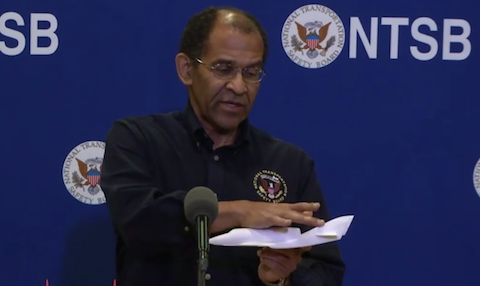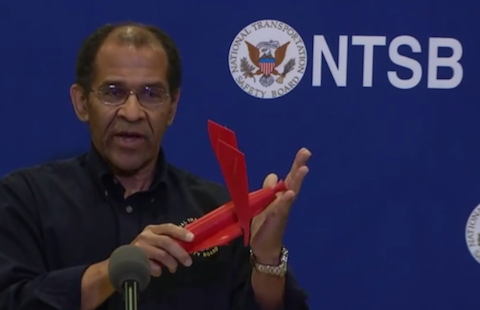'This Week in Airline Safety' for 7 November 2014 discusses how the SpaceShipTwo mishap led to a rethinking of how AirSafe.com will look at space related safety and risk.
Last month's mishap that led to a loss of SpaceShipTwo, the vehicle designed and built by Scaled Composites that Virgin Galactic plans to use to provide anyone with the right combination of desire, adventure, and money a chance to go into space on a suborbital flight. While some in the media, most notably Wired Magazine have questioned the value of what Virgin Galactic is trying to do (referring to SpaceShipTwo as the "world's most expensive roller coaster"), there can be no question that the accident, and the ongoing NTSB investigation, has led to a new examination, both within the aerospace community and by the general public, of the value of space travel.
At AirSafe.com, that examination led to a rethinking of how to look at the history of space from the perspective of risk. As has been the case with airline safety and security, the goal of AirSafe.com is to provide useful information about risk, safety, and security. To that end, there were several changes made to the site, to put the risk of current and future human spaceflight activities into a broader, and perhaps more appropriate, context. The key changes to the site include the following:
Expanding the range of noteworthy events
A revamped and expanded page on space related mishaps will now include mishaps involving any vehicle capable of traveling above the internationally recognized boundary of space (the Karman Line, which is at 100 km above the Earth), where at least one occupant was serious injured or killed, or where the vehicle was lost or destroyed. In the mishaps listed on this page, the vehicle was engaged in a flight, a ground test, or a training session.
Including additional space programs
The pages listing space related mishaps and deaths associated with US space programs now has additional government sponsored or privately sponsored space programs, including the Manned Orbiting Laboratory and X-15 programs that were run by the US government and which both ended in the 1960s, and the current civilian program run by Virgin Galactic.
Expanding the definition of US space program
This page will include deaths of any astronaut or astronaut candidate in any space program sponsored by the US government, or of any person killed while associated with a private or corporate space travel project. The first category would include professional astronauts who were full time astronauts or astronaut trainees and who were killed accidentally whether on duty or off duty.
The second category would include anyone who was killed in a flight, ground test, or training session involving a vehicle capable of traveling into space. This latter category would include people such as NASA payload specialist Ilan Ramon, who was killed in the inflight breakup of Space Shuttle Columbia, and Michael Alsbury, who was killed in the SpaceShipTwo mishap.
This expanded definition of US space program deaths was not possible to do for all the world's space programs, because of the lack of independently verifiable information on space related training deaths in programs previously run by the government of the former Soviet Union, and programs currently being run by the government of the People's Republic of China.
Interesting observations from the updated pages
The newly updated and expanded pages on space related events led to some new observations about the safety history of the world's space programs:
- There have been 14 events involving fatalities in US space programs, killing a total of 29 people, with 16 of the deaths occurring in a vehicle capable of traveling into space.
- Two people have survived a mishap that resulted in the loss of a space vehicle. The first was Virgil (Gus) Grissom in the 1961 flight of Mercury 4, and the second was Peter Siebold in last month's mishap involving SpaceShipTwo.
- Siebold is also the first person to survive a fatal mishap involving a space vehicle.
- Grissom is the only person to have been involved in more than one mishap. He survived Mercury 4, but died in a fire aboard Apollo 1.
- While there have been 10 serious mishaps involving a space vehicle, only seven involved a vehicle that had traveled, or was intending to travel, into space, and only one event (the 1971 flight of Soyuz 11) involved fatalities that occurred in space.
- Based on the internationally recognized boundary of space, the first person to fly into space twice was X-15 pilot Joe Walker, who twice flew above 100 km in 1963.
Additional resources
SpaceShipTwo accident investigation
Space flight related mishaps
Deaths associated with US space programs











